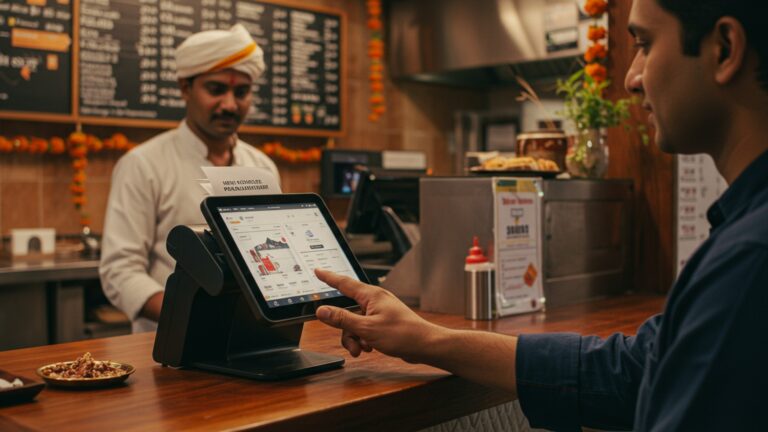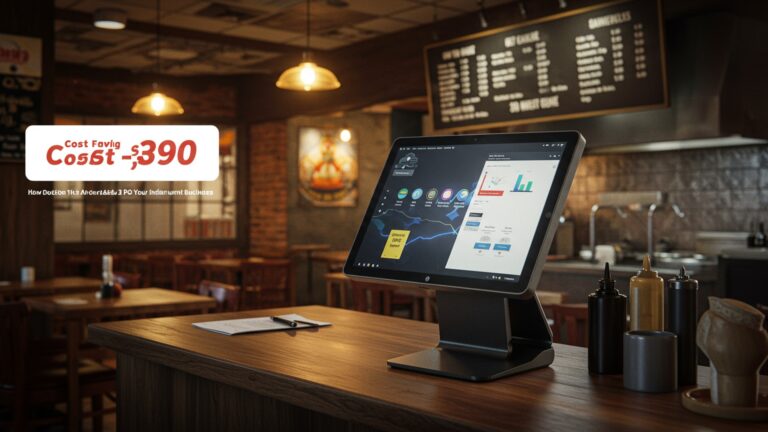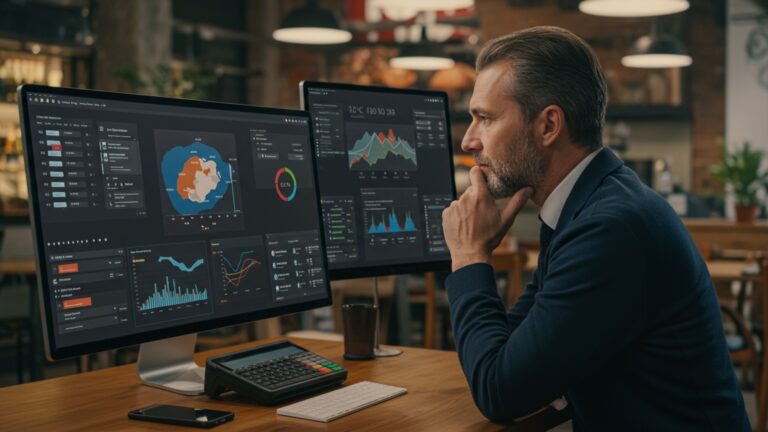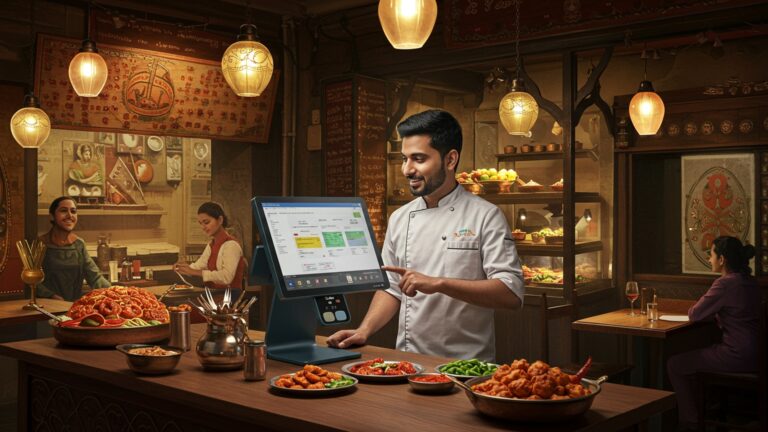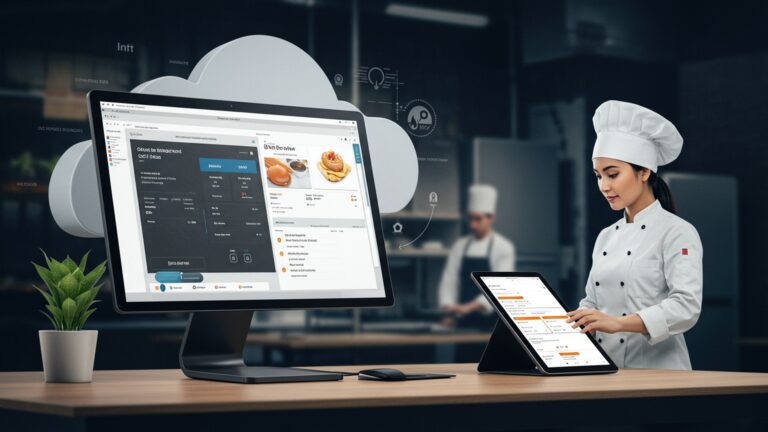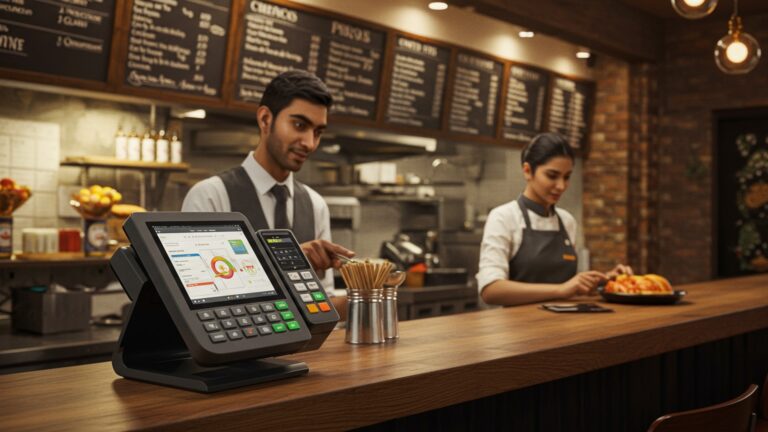7 Essential Features Your Restaurant Billing Software in India Must Have
The dynamic Indian restaurant market, fueled by rapid digital adoption and fierce competition, demands more than just a basic point-of-sale system. Modern operators grasp that robust restaurant billing software India needs to transcend simple transaction processing, evolving into a central nervous system for their business. With UPI payments soaring and online delivery platforms integrating deeply into daily operations, the right software empowers seamless order management, real-time inventory tracking. critical GST compliance, directly impacting profitability and customer satisfaction. It’s no longer a luxury but a strategic imperative for operational excellence.
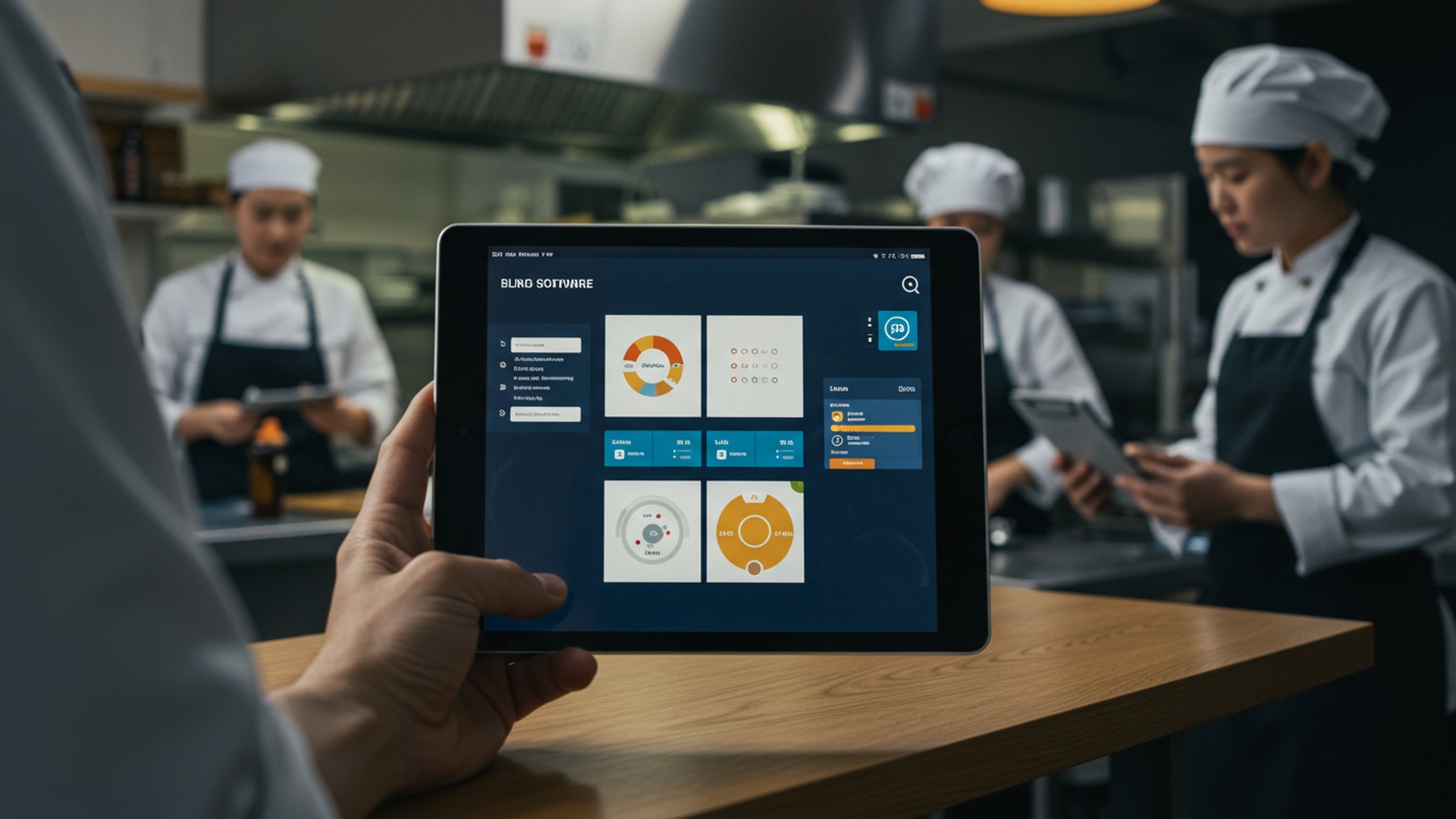
1. Intuitive and User-Friendly Point-of-Sale (POS) Interface
At the heart of any efficient restaurant operation lies its Point-of-Sale (POS) system. For a restaurant billing software in India, an intuitive and user-friendly interface isn’t just a convenience; it’s a necessity. Think about the fast-paced environment of a busy restaurant: orders need to be taken quickly, bills generated instantly. payments processed without a hitch. A complex or clunky interface can lead to errors, slow down service. ultimately frustrate both staff and customers.
What Makes an Interface Intuitive?
- Graphical Layout: Dishes and categories should be visually represented, making it easy for staff to locate items without memorizing codes. For instance, a coffee shop might have buttons for “Espresso,” “Cappuccino,” “Latte,” each with a small icon.
- Minimal Clicks: The fewer steps required to complete an action (like adding an item, applying a discount, or splitting a bill), the better. A well-designed system allows common tasks to be performed in one or two clicks.
- Customizable Hotkeys/Shortcuts: For experienced staff, the ability to use keyboard shortcuts can significantly speed up the order-taking and billing process.
- Clear Error Messages: When mistakes happen, the system should provide clear, actionable feedback rather than cryptic error codes.
Real-World Application: Faster Service, Happier Customers
Imagine a scenario during peak lunch hours. A new server, unfamiliar with the entire menu, needs to take an order for a large table. With an intuitive POS, they can quickly navigate through categories like “Appetizers,” “Main Course – Indian,” “Desserts,” and “Beverages” without extensive training. This reduces order-taking time from several minutes to mere seconds, ensuring customers don’t wait long. This directly translates to higher table turnover and improved customer satisfaction – critical metrics for any restaurant in India.
When evaluating a restaurant billing software India, always request a live demo and have your staff try out the interface. Their feedback will be invaluable.
2. Comprehensive Inventory and Stock Management
Beyond just billing, effective management of your ingredients and stock is paramount to a restaurant’s profitability. A robust inventory management module within your restaurant billing software India helps track everything from raw materials (e. g. , rice, spices, vegetables) to finished goods (e. g. , prepared dishes). This feature is crucial for minimizing wastage, preventing theft. ensuring you never run out of popular items.
Key Components of Inventory Management:
- Recipe Management: This allows you to define the exact quantity of each ingredient required for every dish on your menu. For example, a “Butter Chicken” recipe might specify 200g chicken, 50ml gravy, 10g butter. 2g spices. When a Butter Chicken is sold, these quantities are automatically deducted from your stock.
- Real-time Stock Tracking: The software should update inventory levels instantly as sales occur and new stock is received.
- Purchase Order Management: Generate purchase orders for suppliers directly from the system based on reorder levels or predicted demand.
- Supplier Management: Keep track of supplier details, pricing. delivery schedules.
- Wastage Tracking: Record and categorize spoiled, damaged, or expired items, helping identify areas for improvement.
- Stock Alerts: Automatic notifications when stock levels fall below a predetermined minimum, prompting timely reordering.
Comparison: Manual vs. Automated Inventory
Let’s consider the stark difference between managing inventory manually versus using an integrated restaurant billing software:
| Feature | Manual Inventory Management | Automated (via Billing Software) |
|---|---|---|
| Accuracy | Prone to human error, often inaccurate. | High accuracy, real-time updates. |
| Time & Effort | Extremely time-consuming, requires frequent physical counts. | Automated deductions, quick audits, significant time savings. |
| Wastage Control | Difficult to track specific wastage patterns, high potential for leakage. | Detailed wastage reports, identifies areas of loss, better control. |
| Cost Savings | Higher holding costs due to overstocking, lost sales due to stockouts. | Optimized stock levels, reduced wastage, lower operational costs. |
| Reporting | Basic, often incomplete reports. | Detailed reports on consumption, costs. profit margins. |
By automating inventory, a restaurant can significantly reduce food costs – which often represent 25-35% of a restaurant’s revenue. This is a game-changer for profitability.
3. Seamless Table Management and Kitchen Order Ticket (KOT) System
For dine-in restaurants, efficient table management and a robust Kitchen Order Ticket (KOT) system are non-negotiable. This feature set streamlines the entire order flow, from the moment a customer sits down until their food is served, ensuring accuracy and speed, which are particularly valued in the bustling Indian restaurant scene.
Understanding KOT and Table Management:
- Table Management: This module provides a visual representation of your restaurant’s floor plan. Staff can see which tables are occupied, vacant, or reserved. They can assign orders to specific tables, transfer orders between tables, or even combine/split tables for large groups.
- KOT Generation: Once an order is placed on the POS, the system automatically generates KOTs. These are small slips or digital displays sent directly to the relevant kitchen or bar sections (e. g. , separate KOTs for starters, main course. drinks). Each KOT typically includes the table number, order items, special instructions (e. g. , “less spicy”). timestamp.
- Order Tracking: The system allows staff to track the status of an order – whether it’s “new,” “in progress,” “ready for pick-up,” or “served.” This prevents delays and ensures dishes are served at the right time.
How it Works: A Use Case
Consider a large family dining at your restaurant. The server takes their order on a tablet or POS terminal. As the server enters the items:
// Example of how a POS might process an order internally
Order { Table: "T5", Items: [ { Dish: "Paneer Tikka", Quantity: 1, SpecialInstructions: "Extra spicy" }, { Dish: "Dal Makhani", Quantity: 1 }, { Dish: "Garlic Naan", Quantity: 2 }, { Dish: "Masala Chai", Quantity: 3 } ]
}
The system instantly sends:
- A KOT for “Paneer Tikka” (with “Extra spicy” note) to the Tandoor/Appetizer section of the kitchen.
- A KOT for “Dal Makhani” and “Garlic Naan” to the Main Course section.
- A KOT for “Masala Chai” to the Beverage/Bar section.
Each section prepares its items, marking them as “ready” on their kitchen display system (KDS). The server is notified, ensuring hot food reaches the customer promptly. This integrated approach, often found in advanced restaurant billing software India, virtually eliminates manual errors, lost tickets. miscommunication between front-of-house and back-of-house staff.
4. Integrated Payment Gateway Options and Flexible Billing
In India’s rapidly evolving digital payment landscape, a restaurant billing software must offer seamless integration with various payment gateways. Cash is no longer king. customers expect the flexibility to pay using their preferred method, be it UPI, credit/debit cards, mobile wallets, or even specific food delivery platform payments. Moreover, the software needs to support flexible billing options to cater to diverse customer needs.
Essential Payment & Billing Features:
- Multiple Payment Modes: Support for major credit/debit cards (Visa, Mastercard, RuPay), UPI (e. g. , Google Pay, PhonePe, Paytm), mobile wallets (Paytm, Freecharge, etc.) , net banking. cash. The software should ideally integrate directly with payment terminals (EDC machines) and QR code generation for UPI.
- Split Billing: Customers often want to split bills by item, by equal share, or by custom amounts. The software should easily facilitate this.
- Partial Payments: Ability to accept partial payments or advances, especially for large bookings or catering orders.
- Discount and Offer Management: Apply various types of discounts (percentage, fixed amount), coupon codes. promotional offers.
- Service Charge & Taxes: Automatically calculate and apply GST (Goods and Services Tax), service charges. other applicable levies in compliance with Indian regulations.
- Refunds and Voids: Efficiently process refunds for returned items or void incorrect transactions.
Actionable Takeaway: Streamlining Transactions
A restaurant using an advanced restaurant billing software in India with integrated payment options can significantly speed up the checkout process. Instead of manually entering amounts into a separate card machine or generating a static QR code, the system can push the exact bill amount directly to the payment terminal or generate a dynamic UPI QR code linked to that specific transaction. This reduces errors and provides a smoother customer experience. For instance, after a customer confirms their bill, the server simply selects “Pay by UPI,” and a QR code appears on the customer-facing display or a printed slip, ready for scanning.
5. Robust Reporting and Analytics Capabilities
Data is the new gold. for a restaurant, actionable insights derived from sales and operational data can be the difference between merely surviving and thriving. A top-tier restaurant billing software India doesn’t just process transactions; it transforms raw data into meaningful reports and analytics, empowering owners and managers to make informed business decisions.
Key Reports and Insights:
- Sales Reports:
- Daily/Weekly/Monthly Sales: Track revenue trends over time.
- Sales by Item/Category: Identify best-selling dishes, slow-moving items. popular categories.
- Sales by Staff: Evaluate individual employee performance.
- Sales by Payment Method: grasp customer payment preferences.
- Sales by Hour/Day: Pinpoint peak hours for better staffing and inventory planning.
- Inventory Reports:
- Stock Levels: Real-time view of all inventory.
- Consumption Reports: Track ingredient usage against sales.
- Wastage Reports: Detail spoilage, theft. other losses.
- Cost of Goods Sold (COGS): Calculate the actual cost of dishes sold.
- Customer Reports:
- Loyalty Program Performance: Track redemption rates and customer engagement.
- Customer Visit Frequency: Identify repeat customers.
- Customer Spending Patterns: comprehend what your loyal customers prefer.
- Profitability Reports:
- examine profit margins per dish, category, or overall.
- Identify the most profitable items on your menu.
Using Data for Strategic Decisions
Consider a restaurant owner in Delhi using their billing software’s analytics. They notice that “Butter Chicken” is their top-selling dish. its profit margin is lower than “Paneer Lababdar.” Detailed inventory reports reveal that the cost of chicken has steadily increased. With this insight, they can:
- Negotiate better prices with chicken suppliers.
- Adjust the selling price of Butter Chicken slightly.
- Promote Paneer Lababdar more aggressively through specials or combos to boost its sales and overall profitability.
This kind of data-driven decision-making, facilitated by comprehensive reporting, is indispensable for optimizing operations, menu engineering. marketing strategies for any restaurant billing software India.
6. Integrated Customer Relationship Management (CRM) and Loyalty Programs
In today’s competitive F&B market, retaining existing customers is often more cost-effective than acquiring new ones. An integrated CRM module within your restaurant billing software India allows you to build stronger relationships with your patrons, personalize their experience. encourage repeat business through loyalty programs.
What CRM and Loyalty Features Entail:
- Customer Database: Capture essential customer insights like name, contact details, birthdate. visit history directly from the POS.
- Order History Tracking: Keep a record of what each customer orders, allowing for personalized recommendations.
- Loyalty Points System: Implement a points-based program where customers earn points for every purchase, redeemable for discounts or free items.
- Discount/Voucher Management: Create and manage various types of vouchers, gift cards. promotional discounts.
- Automated Marketing: Send automated SMS or email messages for birthdays, anniversaries, special offers, or abandoned carts (for online ordering).
- Feedback Management: Collect customer feedback directly through the system or integrated third-party tools.
Case Study: Enhancing Customer Loyalty
A popular South Indian restaurant in Bangalore implemented a loyalty program through its restaurant billing software. Customers signing up receive a digital loyalty card. For every ₹100 spent, they earn 5 points, with 100 points redeemable for a ₹50 discount. The system also tracks their favorite dishes. When a regular customer, Mr. Sharma, visits, the staff can quickly see his past orders. On his birthday, the system automatically sends him an SMS with a special discount voucher. This personalized approach makes customers feel valued, leading to:
- Increased visit frequency.
- Higher average spend per visit.
- Positive word-of-mouth referrals.
This functionality moves beyond simple transaction processing, transforming the restaurant billing software into a powerful tool for customer engagement and business growth.
7. Multi-Outlet Management and Cloud-Based Accessibility
For restaurants looking to scale or manage multiple locations, multi-outlet management and cloud-based accessibility are absolutely critical. A modern restaurant billing software India should offer these capabilities to ensure centralized control, real-time data synchronization. operational flexibility, regardless of geographical spread.
Understanding the Concepts:
- Multi-Outlet Management: This feature allows a single software system to manage operations across multiple restaurant branches. From a central dashboard, owners can monitor sales, inventory. staff performance for each individual outlet or for the entire chain. This is invaluable for maintaining brand consistency and operational efficiency.
- Cloud-Based Software: Unlike traditional on-premise software that runs on local servers and requires manual updates, cloud-based software is hosted on remote servers and accessed via the internet. This means data is stored securely off-site. the software can be accessed from any device with an internet connection (laptop, tablet, smartphone).
Comparison: On-Premise vs. Cloud-Based Software
Let’s look at the advantages of cloud-based solutions, especially for a restaurant chain:
| Feature | On-Premise Software | Cloud-Based Software |
|---|---|---|
| Accessibility | Limited to local network, requires physical presence or VPN. | Accessible anywhere, anytime, on any device with internet. |
| Setup Cost | High initial investment for servers, hardware. installation. | Lower initial cost, subscription-based model. |
| Maintenance | Requires in-house IT support, manual updates, data backups. | Managed by vendor, automatic updates, secure cloud backups. |
| Scalability | Complex and costly to scale for new outlets. | Easily scalable, add new outlets or users with minimal effort. |
| Data Security | Relies on local security, vulnerable to hardware failure/theft. | Robust cloud security measures, data redundancy, disaster recovery. |
| Real-time Reporting (Multi-Outlet) | Difficult to consolidate real-time data from multiple locations. | Centralized real-time reporting across all outlets. |
Real-World Impact: Seamless Expansion
Consider a growing cafe chain in Mumbai planning to open its third branch. With a cloud-based restaurant billing software, the process is streamlined:
- New outlet setup: The software vendor can provision the new outlet in minutes, with pre-configured menus, pricing. inventory settings.
- Centralized menu updates: A new seasonal special can be pushed to all outlets simultaneously from the head office.
- Consolidated reporting: The owner can view the combined sales performance of all three cafes on a single dashboard, comparing individual outlet performance and identifying trends.
This level of integration and accessibility is vital for efficient management and rapid expansion in the dynamic Indian F&B market, making a cloud-based multi-outlet restaurant billing software India an indispensable tool for growth-oriented businesses.
Conclusion
Choosing the right billing software isn’t merely a technological upgrade; it’s a strategic investment in your restaurant’s operational agility and customer satisfaction. As the Indian hospitality landscape rapidly digitizes, with patrons increasingly expecting seamless digital payments and efficient service, your software must be more than just a transaction recorder. My personal tip? Look beyond the basic features and envision how the software will genuinely enhance your daily workflow, from order taking to inventory management, much like optimizing your entire billing process with modern solutions. Consider the ripple effect of a robust system: fewer billing errors, quicker table turns. satisfied customers who return. For instance, a system that seamlessly integrates with your kitchen display system, offers real-time sales analytics. supports diverse payment gateways—including UPI—is non-negotiable in today’s market. This foresight ensures you’re not just keeping pace. leading the charge in efficiency. Embrace these essential features to empower your team and elevate your restaurant’s brand. The power to transform your restaurant’s efficiency and customer experience lies in making an informed decision today. By meticulously evaluating these core features, you’re not just purchasing software; you’re investing in sustained growth and a thriving future. Take the leap. watch your restaurant flourish!
More Articles
10 Essential Features for Restaurant POS Software India Success
How to Pick the Best Restaurant POS System for Small Restaurants India
7 Smart Benefits of a Restaurant POS System for Small Restaurants India
How to Optimize Your Billing Process Using Modern POS Software Solutions
8 Practical Ways to Prevent Billing Errors and Save Money
FAQs
Why is seamless GST compliance a must-have for restaurant billing software in India?
In India, accurate GST calculation and reporting are non-negotiable legal requirements. Your software needs to automatically handle different GST rates, generate proper invoices. simplify tax filing, saving you from penalties and ensuring financial transparency.
How does efficient KOT and table management actually help my restaurant?
This feature streamlines your entire order process. From taking orders on the go (KOT – Kitchen Order Ticket) to assigning tables, managing transfers. splitting bills, it reduces errors, speeds up service. ensures smooth communication between your front-of-house and kitchen staff.
Can billing software truly help me control food costs through inventory management?
Absolutely! Integrated inventory management tracks ingredient usage in real-time, alerts you when stock is low, helps manage recipes. identifies wastage. This gives you precise control over your raw material costs, minimizing spoilage and optimizing procurement.
What’s the importance of supporting various payment methods, especially UPI, in today’s market?
Customers expect flexibility. Your software should support cash, cards, mobile wallets. critically, UPI – which is hugely popular in India. This speeds up checkout, offers convenience to your diners. simplifies daily reconciliation for your accounting team.
What kind of actionable insights can I expect from the reporting and analytics features?
Beyond just sales figures, robust reporting provides deep insights into your business. You can track peak hours, popular menu items, staff performance, identify slow-moving inventory. comprehend customer spending patterns, empowering you to make data-driven decisions.
Should my billing system also help me build better customer relationships?
Yes, definitely! Features like customer databases, loyalty programs. integrated feedback mechanisms allow you to interpret your patrons better. You can offer personalized discounts, reward repeat customers. gather valuable reviews, fostering loyalty and driving repeat business.
Why should I prioritize cloud-based and user-friendly billing software?
Cloud-based software offers remote access, automatic data backups. regular updates without manual intervention, enhancing security and accessibility. A user-friendly interface is crucial for quick staff training, reducing operational errors. ensuring smooth, efficient service during busy periods.

